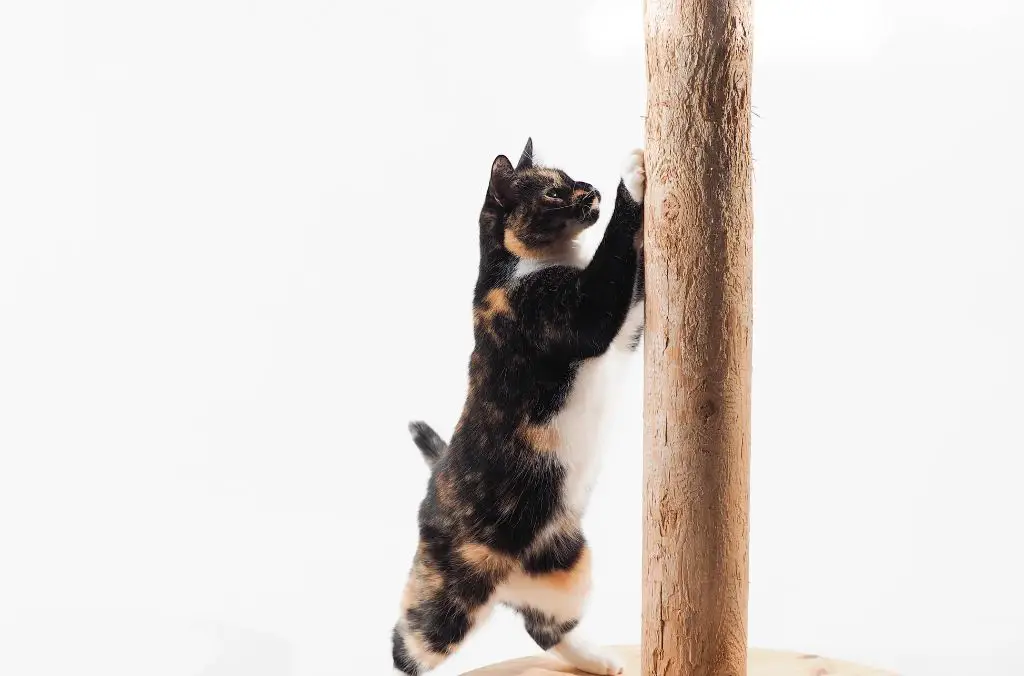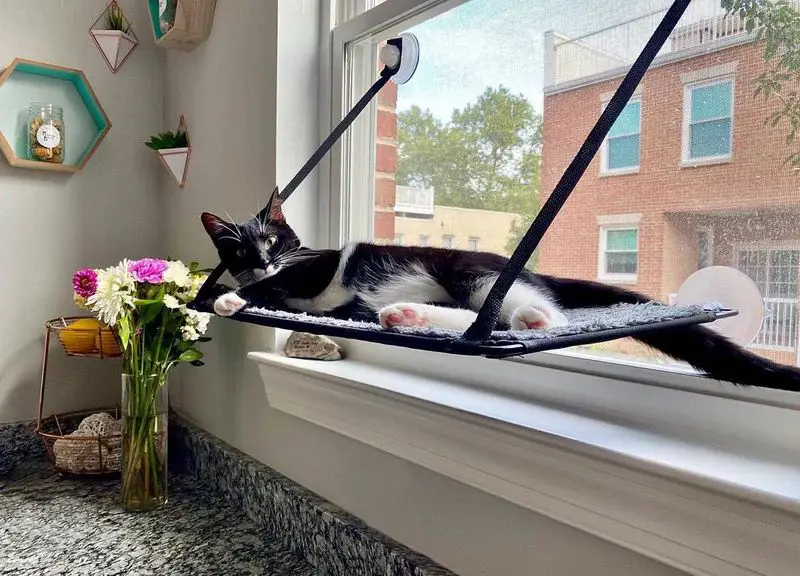Territory marking is an important behavior that allows cats to establish boundaries and communicate with other cats. Marking involves a cat depositing strong scents from glands or substances like urine to “claim” an area. Understanding territory marking helps owners interpret this natural feline behavior.
For domestic cats, marking helps establish spaces within a home. It signifies the areas a cat is most comfortable in and wants to frequented. Marking also allows cats to exchange information without direct contact. The scents provide cats with clues about other animals in the area.
While sometimes seen as problematic behavior by owners, territory marking is normal for cats. Learning why cats mark can help prevent issues between pets in a household. It also reduces stress for indoor cats adjusting to a new environment.
Scent Glands
Cats have scent glands located in various places on their bodies. These glands secrete pheromones and other scents that allow cats to mark their territory and communicate information to other cats. Some of the major scent gland locations in cats include:
Facial glands – Cats have scent glands on their lips, cheeks, chin, forehead and around their ears. Rubbing their head against objects allows them to deposit pheromones and scent from these glands. As per Catster, facial rubbing “puts [a cat’s] signature on something, claiming ownership.”
Paw pads – Cats have sweat glands on their paw pads. When they knead or scratch objects, they leave behind their scent. The scents from paw pads provide information about identity and territory.
Tail area – Cats have anal glands near the base of their tails that secrete strong scents. They can release these odors when scared or upset. There are also sebaceous glands along the tail that distribute scents as the tail moves against objects.
According to Cat Care Center, scent glands can also be found on a cat’s “chin, lower ears, forehead, cheeks, tail, rear, back, and paw pads.” Depositing pheromones from these glands allows cats to mark their territory and provide information to other cats.
Facial Rubbing
Cats have scent glands on their cheeks and forehead that secrete pheromones. When a cat rubs its head against objects or people, it is depositing these pheromones as a way to mark its territory and claim ownership. This behavior is known as bunting or head butting.

According to Southern Living, bunting releases pheromones that provide cats with information about other animals, including other cats and humans. Cats use pheromones to communicate things like marking territory, claiming ownership, bonding, and delivering other social messages.
As mentioned in PetMD, when cats rub against people, it is usually a sign of marking territory, acceptance, greetings, and affection. So facial rubbing deposits pheromones that allow cats to mark objects and people as their own.
Urine Spraying
One of the most common ways cats mark their territory is through urine spraying. This refers to when a cat backs up to a vertical surface like a wall, window, or piece of furniture and releases a small amount of urine. The urine leaves visual marks as well as scent marks for other cats. According to WebMD, unneutered male cats are the most likely to urine spray, though females do it as well. About 5% of neutered males and 5-10% of spayed females also urine spray.
Cats don’t squat and eliminate a large volume when they urine spray. Rather, they remain standing and quiver their tail while spraying small amounts of urine backwards onto vertical surfaces. Anything from walls to furniture to appliances can be urine spray targets. Though sometimes aimed at people, urine spraying is typically done to mark territory or signal sexual availability.
Urine spraying isn’t typically due to litter box problems or bladder infections, according to PetMD. Rather, it’s a form of feline communication. Veterinarians suggest neutering or spaying cats young, before 6 months, can reduce the likelihood of urine spraying. For cats who continue to urine spray, there are training techniques and medications that can help curtail the behavior.
Scratching
Cats have scent glands in their paws that secrete pheromones when they scratch objects. Scratching is one way cats mark their territory by leaving both a visual mark and a scent mark from the pheromones in their paw pads [1]. Research shows cats will not scratch places that lack their own scent, so scratching is a way for them to feel secure by spreading their scent in an area [1].

Cats also scratch to mark territory, like tree trunks, furniture corners, and other prominent objects in their environment. This scratching behavior visibly and chemically marks the area as their territory [2].
Fecal Marking
Fecal marking, also known as middening, is another way cats mark their territory. Unlike urine spraying which is a vertical behavior, cats engage in fecal marking by leaving feces uncovered to spread their scent. Most cats are very meticulous about burying their feces, but when middening, they purposely leave their poop uncovered. This allows the strong odor to signal to other cats that this area is occupied.
According to the ASPCA, “Some cats may fail to bury their feces as a way to advertise their presence and render their territory off limits to other cats”. So while stool left unburied may look like a litter box accident, it’s often a calculated move by cats staking their claim on an area.
Chin Rubbing
Cats have scent glands in their chins that produce pheromones. When a cat rubs their chin on objects, furniture or people, it deposits these pheromones and marks the items as its territory. This is a way for cats to spread their scent and establish ownership over areas and objects. The chin rubbing behavior starts as early as 3 weeks of age.
According to Southern Living, cats primarily use chin rubbing to mark their territory and show affection. The act of rubbing on people or objects transfers the cat’s scent. This allows the cat to stake their claim and spread their smell. It is an important feline communication method.
Rolling
Cats also mark their territory by rolling on the ground, rubbing their cheeks and bodies against various surfaces in your home. According to https://www.hartz.com/territorial-marking-behavior-in-cats, when cats roll around, they deposit scent from glands located around their face, tail area, and feet onto the ground. This leaves a scent marker for other cats that may pass by. Both male and female cats will roll on their backs, rubbing their cheeks on the floor to mark their territory. Cats tend to focus this rolling and rubbing behavior in areas they frequent often, like on furniture or near their food bowls.

Inter-cat Aggression
Territorial aggression between cats is common, especially in multi-cat households. Cats are very territorial animals and use a variety of tactics to claim areas as their own, including urine marking, facial rubbing, and aggressive behavior. A recent study reported that 27% of cats relinquished to shelters for behavioral reasons were surrendered for aggression. Inter-cat aggression often occurs when a new cat is introduced to a household with existing cats. The resident cats feel their territory is being encroached upon and react aggressively to defend their space.
Cats may exhibit territorial aggression through stalking, ambushing, chasing, and full-on fighting with the intruding cat. This can lead to injuries for one or both cats. It’s important to introduce new cats slowly and properly socialize them to avoid extreme territorial aggression. Providing vertical space via cat trees, shelves, and perches can give cats their own territory and escape routes. Using pheromone diffusers and sprays may also help calm tensions between cats sharing a territory.
If aggression persists, consulting with a veterinary behaviorist is recommended. With proper training, medication, and environmental management, inter-cat aggression can be reduced significantly.
Conclusion
In summary, cats have various ways of marking their territory using scent glands, facial rubbing, urine spraying, scratching, fecal marking, chin rubbing, and rolling. Understanding why and how cats mark their territory is important for cat owners. It enables owners to provide suitable outlets for natural territorial behaviors and reduce undesirable marking in the home.
Territorial marking is normal instinctive behavior for cats. It establishes space and resources for individual cats and signals possession to other cats. Marking with scents from glands and urine reinforces the message. Cats commonly mark areas they perceive as their territory, such as the home. Marking helps them feel secure in their space.
However, marking indoors can be problematic for owners. Providing enough vertical and horizontal scratching posts, keeping litter boxes clean, using synthetic pheromones, and addressing conflict between housemate cats can help reduce undesirable territorial marking inside. Allowing cats to mark in suitable outdoor areas around the home is also recommended. Understanding why cats mark empowers owners to manage this natural behavior effectively.


